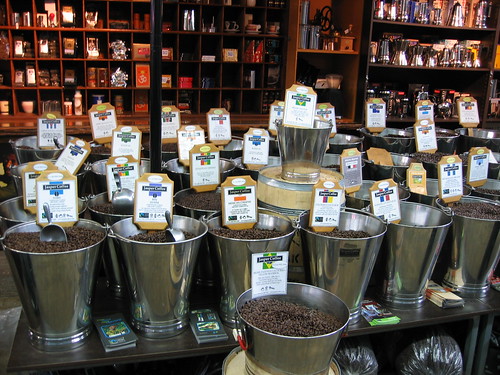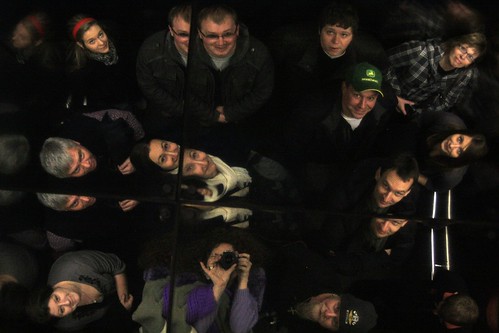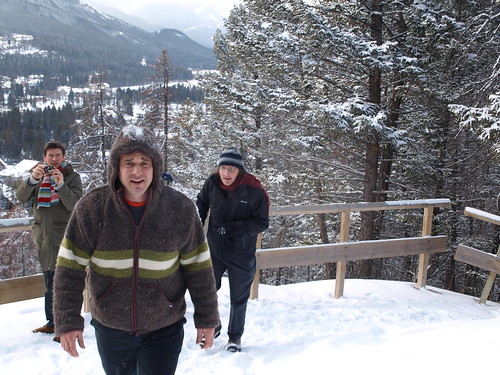Continuing my thoughts on the book writing process, this post is about how the process itself has changed, for me at least, over recent years.
I start my book by comparing the process of writing this book with my last one about 6 years ago. Below is a list of some of the tools and resources I used to write this book:
- Books – via the library but increasingly as ebooks and on Kindle, and one audiobook
- E-journals – my university library has access to a wide range of databases, but I also made frequent use of others through tools such as Google Scholar and Mendeley
- Delicious/social bookmarking – as well as searching for key terms I would ‘forage’ in the bookmarks of people I know and trust, who make their collections available
- Blogs – I subscribe to over 100 blogs in Google Reader, which I try to read regularly, but in addition I have cited and used many posts from other blogs
- YouTube, Wikipedia, Slideshare, Scribd, Cloudworks and other sites – text is not the only medium for sharing now, and for certain subjects these ‘web 2.0’ services offer useful starting points, or overviews, as well as insightful comment
- My own blog – I have kept a blog for around five years now, and it provided a useful resource for items I have commented on, and drafts of sections of this book. I also have a scrapbook type blog I keep using Tumblr where I post any interesting links or multimedia, and revisited this for resources I had harvested over the past few years. The blog was also a means of posting draft content to gain comments and feedback, which could then be incorporated into further iterations of writing
- Social network – my Twitter network is especially useful for gaining feedback, asking for suggestions, and on a daily basis, as a filter and collection mechanism for sharing resources
- Work and personal network – undoubtedly working in an intellectually lively environment, and having face to face discussions with colleagues has been invaluable
- Google alerts – I set up alerts for a few key phrases, which would then provide me with daily email updates on new content containing these key words. This allowed me to find new resources, track conversations and stay abreast of a field which was changing as I wrote the book
- Seminars and conferences - my attendance at face to face conferences has declined due to other commitments but I regularly attend, or dip into conferences remotely (see Chapter 10 for a more detailed exploration of the changing nature of conferences)
If I compare this with the tools I used when I wrote my last book in 2004, then many of these services did not exist or were in their infancy. Of this list I probably used books, journals and face to face conferences, with maybe some initial exploration of blogs.
In many ways the changes are not dramatic – books and journal articles still constitute a large part of the information sources I draw upon, although blogs in particular have increased in significance. And the output of all this is still that most traditional of information sources, a book. But the changes are also significant for three reasons, I would suggest.
Firstly, the quantity of this information that is available online has increased considerably. I could access nearly all of it from my desk at home, there was no need to visit a physical library or bookstore. The digitisation of relevant content was almost total for the information sources I required for this book, compared with about half of that in 2004.
The second factor is the significance of my online network in the writing process. I have around 3,000 followers in Twitter and around 2,000 subscribers to my blog (often they are the same people), which represents a wide pool of experience to draw upon. Sometimes I would put out a direct call to this network, along the lines of ‘Does anyone have a good example of …’ In other cases I would post drafts of the content to my blog and receive comments and links to relevant material. Even without these direct appeals this distributed, global peer network represents an invaluable information source, comprising links to resources, commentary on issues, extended debate, use of new methods and technology, and contributions in the form of blog posts, videos and audio.
This last item leads me to the third significant difference from the previous book, which is the range and variety of content that I drew upon. Even six years ago the type of content was largely limited to journal articles and books. Now, this has diversified to include blog posts, videos, draft publications, conference presentations and also the discussion, comment and debate surrounding each of these. The change from 2004 is partly a result of the first factor, quantity. There is just more of this stuff around. But it is also a result of a shift in attitude (at least on my part), in the legitimacy of these other forms of output, and their central, vital role in everyday scholarly activity.
The comparison of writing these two books is instructive, I feel, because it gets to the heart of digital scholarship: it is both a profound change and a continuation of traditional practice. This can be seen with the final output also: the previous book existed only in traditional, paper format, and the copyright to this was owned by the publishers. The new book is available in the traditional format, but also online, freely available under a Creative Commons licence. In addition there is a set of resources, such as videos, presentations, blog posts, etc which relate to the book, and then comment and reaction to these. And this is becoming more common: my colleague Grainne Conole, is writing a book by blogging chapters and gaining feedback in a site called Cloudworks (http://cloudworks.ac.uk/cloudscape/view/2155). Conor Gearty, a Professor of Law at the London School of Economics, is writing a book by posting a weekly video which sets out his theme and encourages discussion (http://therightsfuture.com/). The boundary between Gearty’s book and a course, and the comments of the participants is deliberately blurred.
This conflict between what, from one perspective, seems a substantial change in practice, and from another, appears to be a conservative, minor adjustment to standard approaches, characterises not just book production, but any aspect of scholarly activity, including research, knowledge dissemination, public engagement and teaching. Both radically different and yet familiarly traditional seems to be the story of digital scholarship at the moment, and it is the tension between these two forces that my book sets out to explore.





